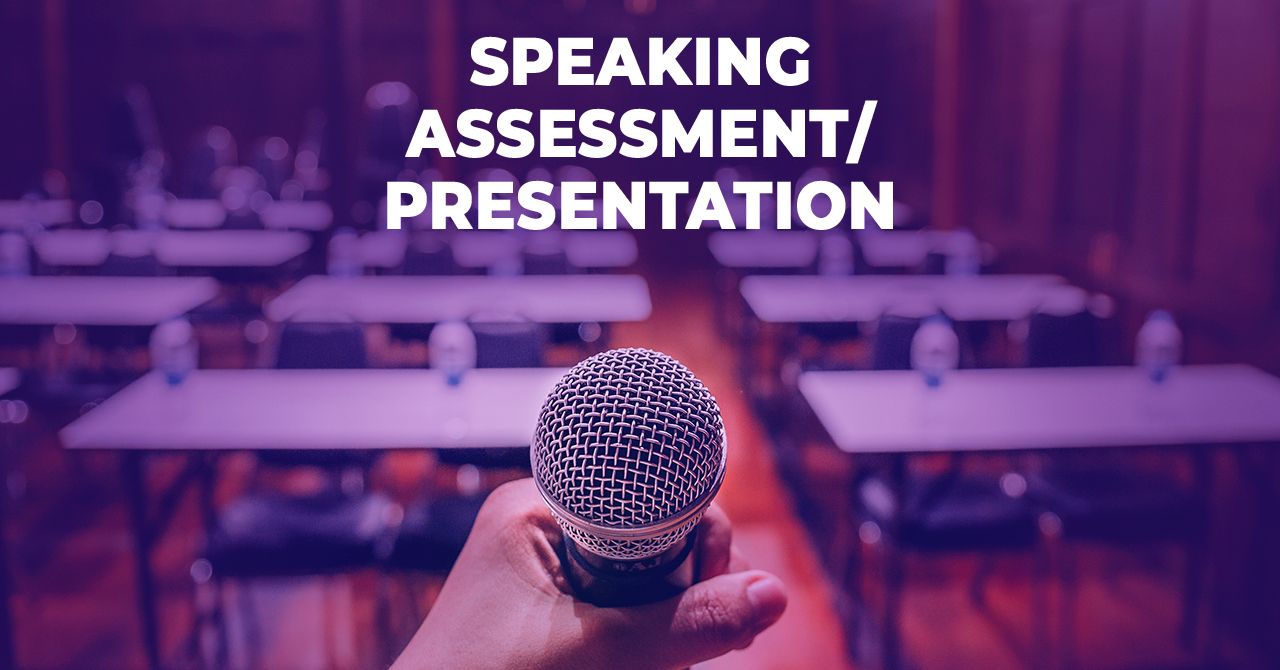
Preparing for a speaking assessment/presentation
These impressive tips and suggestions will help you deliver an impressive performance, (In this guide I will not be discussing the IELTS or TOEFL exams – keep an eye out for something on those at a later date) and hopefully remove some of the stress!

Get a FREE guide!
Want to sound like a native English speaker?
Get our free PDF with top tips that work.

Check your email!
Speaking in public often comes in at the number one position of greatest fears for people — way ahead of a fear of flying, heights, snakes, spiders, and running out of charge on your phone in the middle of nowhere, but fear not!
These impressive tips and suggestions will help you deliver an impressive performance, (In this guide I will not be discussing the IELTS or TOEFL exams – keep an eye out for something on those at a later date) and hopefully remove some of the stress!
There are three key aspects here:
- Know your material thoroughly.
- Preparing your material.
- Practice repeatedly.
For the remainder of this article, we will assume that you are using PowerPoint as part of your Presentation.
Knowing your material thoroughly
It may seem obvious to say that you need to know what you are talking about, but if you only have knowledge about what is just in your PowerPoint you may have difficulty answering questions – and yes, there will be questions because it is an assessment.
You can expect a range of questions from your teacher/examiner to determine the depth of your knowledge and understanding of your topic. HOWEVER, it is very likely that the person asking you questions will already know or have a fairly good idea what the answer should be, they are seeing if YOU know.
It is okay to check your notes if you are not sure, and if you really don’t know the answer or you do know it, but your brain refuses to tell you just say something along the lines of “Sorry, I cannot recall the answer at the moment.” This sounds to the teacher/examiner that you probably do know it, but you are nervous and have forgotten it.
• Don’t say this for every question as it becomes obvious you haven’t prepared well enough.
• Don’t makeup facts – it is usually quite obvious you are doing this.
• Don’t ignore a question – it is rude. Just apologise and say that you don’t have time to answer right now, but you are happy to take questions at the end. This is good as it gives you more time to think of an answer.
Preparing your material
As an examiner I can tell you that there is nothing worse than looking at a PowerPoint that has every slide stuffed with images and text that are all squashed together and the colour scheme looks like a unicorn vomited rainbow puke all over it – I have to reach for my strongest pair of sunglasses.
A few do’s and don’ts
FONTS
Stick to no more than two fonts. Perhaps one for headings and one for text. Make sure that they are basic and easily read, fancy fonts look nice, but they are annoying to most of your audience
Think about spacing – I would recommend 1.5 or 2.0 – much easier for all to read.
Think about size -anything from 12.0 to 14.0 looks good on a big screen.
COLOURS
You may be using a PowerPoint template – good idea, they are designed by experts, so the colours are balanced. If you are using your own don’t use more than three colours as it becomes too distracting
Don’t use colours that clash e.g. purple and orange. They just look awful, and the audience will come away remembering your ghastly colour scheme, not your topic.
Consider using different shades of the same colour.
OTHER
Don’t overdo it with all the fancy transition effects between slides, any more than two becomes very annoying very quickly.
A really good idea is to have your notes align with your PowerPoint slides. This means that the notes on Card One are ONLY about Slide One, the notes on Card Two are ONLY about Slide Two, and so on.
This allows you to quickly move the previous card to the bottom of your pile, and you have everything you need in front of you. Make sure you name them Slide 1, Slide 2, Slide 3, etc.
So even if you drop your cards (hopefully this never happens) you can pick them up and quickly find the one you were up to then carry on.
Practice repeatedly
If your audience is talking or someone yells “Boring” from the back of the class (hopefully it is not your examiner) then you clearly have not practiced enough.
The absolute worst thing you can do is stand with your back mostly to the audience and read what is on the screen and do nothing else – if you do this you deserve to fail.
So, try these out.
Use the video record function of your cell phone to record your first practice. You can expect to see most or all of the following:
- You repeat yourself.
- Lots of verbal pauses - um, err, ahh
- Long gaps between speaking
- You are dancing around like you need to go to the toilet urgently.
- You are speaking too quickly.
- Little or no eye contact (There must be something so fascinating out the window or on that wall you keep looking at).
- Monotone voice – you sound so boring.
- Timing is off, there will very likely be a time limit for your presentation e.g. 8 to 12 minutes, so you either finished too soon or were only 2/3 of the way through when the time was up.
- Rushed through the last two or three slides because you knew your time was nearly up.
- Your back is to the audience too much.
What was your score?
8/10?
Or higher?
Oops!
By practicing over and over and recording yourself each time you should be able to eliminate most of these and the ones you cannot eliminate you should be able to reduce considerably.
Feedback from a live audience is the most valuable and the more of this you can get the better, but your audience needs to be honest, and you must not get upset when they offer you honest constructive criticism.
As well as practicing with your classmates you should try your presentation out on people who are unfamiliar with the topic and ask them for the same honest constructive criticism. (If family members are reluctant to sit through your presentation consider bribing them or making them wait for dinner!)
Will you still be nervous?—Of course
Will you feel prepared?—Absolutely
Just be your own fabulous self—smile and give it your best!
















